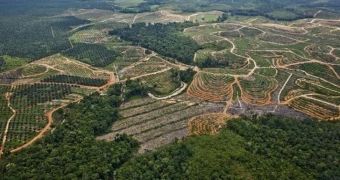Greenpeace is very busy these days. It is protesting the use of nuclear power, it is trying to get Procter&Gamble to quit using palm oil linked to forest destruction, and it is also doing its best to convince fashion brands to cut all ties with toxic chemical compounds.
Still, the organization has somehow managed to find the time to also educate the general public with respect to a threat to biodiversity that most people tend to forget about.
This threat is not the practice of clearing forests altogether, but the practice of only cutting trees that cover fairly small areas.
As Greenpeace explains in a blogpost published earlier today, this second method of destroying natural ecosystems is known as forest fragmentation.
“Tropical forests are home to more species than nearly any other ecosystem on the planet, but increasingly this biodiversity is threatened. When forest is cleared, there is a reduction in forest area, which affects biodiversity,” the organization writes on its website.
“There is also another highly damaging impact that is less obvious: fragmentation. This is when the remaining areas of forest become broken up into isolated patches or fragments,” it further details.
In a recent report, Greenpeace says that, according to its investigations into the matter at hand, fragmentation affects both the pollination of trees and seed dispersal.
This is because a majority of pollinators do not like to journey across gaps as wide as 100 meters (roughly 328 feet), and neither do many of the animals that are in charge of carrying seeds from one area to another.
“In some tropical regions, up to 90% of tree species are dispersed by animals. Large-seeded trees are particularly vulnerable because fragmentation can cause the loss of nearly all animals large enough to dispersing large seeds (e.g. forest elephants).”
“For example, forest fragments in Mexico had virtually no large-animal seed dispersers, causing the survival of seeds from large-seeded trees to drop by approximately 50%. Hence, fragmentation can have a large negative impact on tree reproduction,” the organization argues.
Besides, the organization claims that large predators such as tigers are more often than not altogether absent from fragmented forests. This absence has a negative impact on the natural ecosystems and these animals should be part and parcel of, and can cause what Greenpeace calls a trophic cascade.
Lastly, the environmentalists argue that forest fragmentation makes wild areas more vulnerable to human settlers and invasive species, and that this is why, as surprising as this may sound, regrowing trees on small and isolated patches of land is not as easy as one might think.

 14 DAY TRIAL //
14 DAY TRIAL //